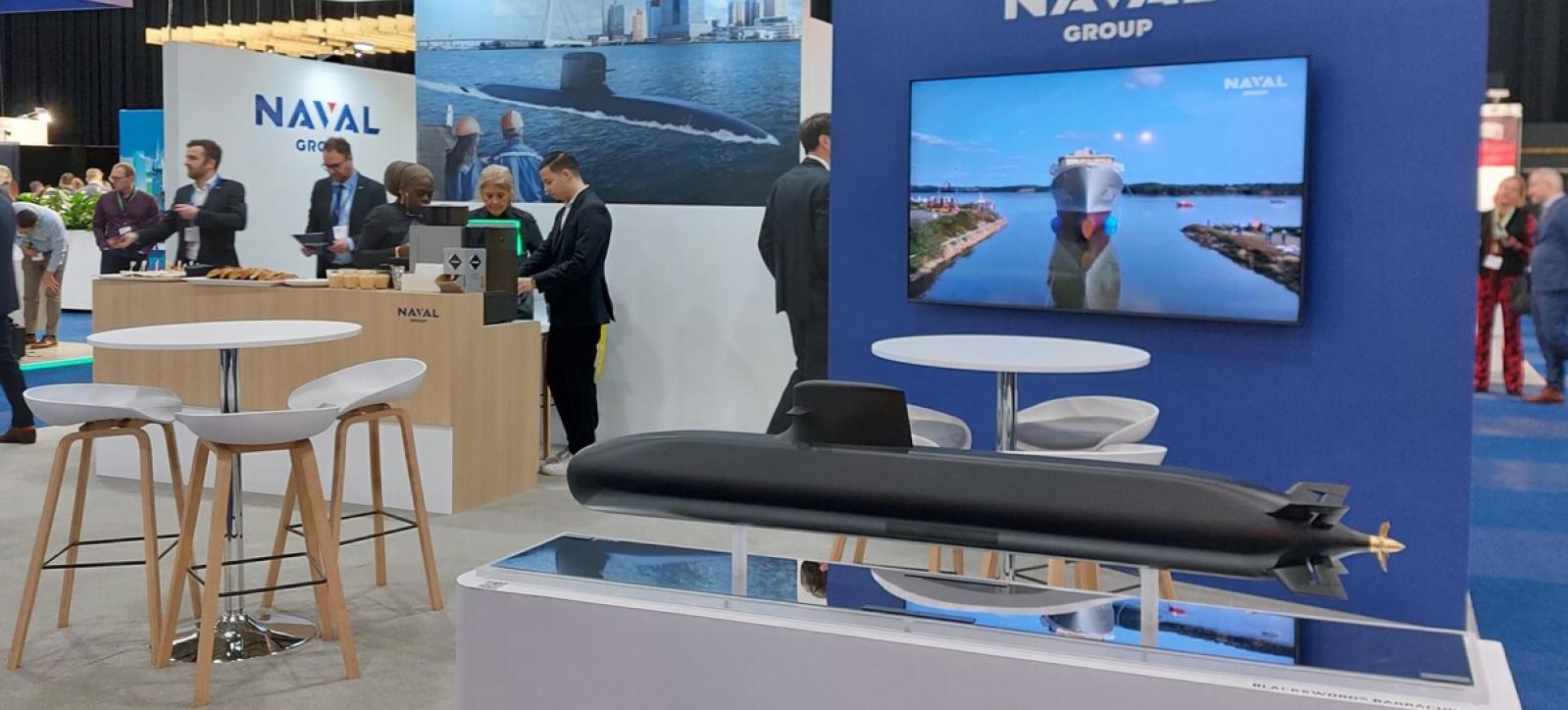Rear Admiral Robbie Lauchlan, Royal Navy Chief Strategic Systems Executive, shakes hands with Vice Admiral Johnny Wolfe, Director Strategic Systems Programs. Lauchlan presented Wolfe with a plaque to commemorate the 200th meeting of the US-UK Joint Steering Task Group when the group met on 14 December at Strategic Weapons Facility Atlantic, in Kings Bay, Georgia. The Joint Steering Task Group, established in 1963 under the Polaris Sales Agreement, is tasked with the purpose of advising the U.S. and UK project officers responsible for maintaining the US and UK submarine launched nuclear deterrent capability. Members of the group advise the project officers on developments and topics involving the interfaces between the equipment provided by the US and UK related to the strategic weapons system and on development of new or modified equipment to meet specific UK requirements for the strategic weapons system. (Credit: US Navy/Shelby Thompson)
KINGS BAY, Georgia – The 200th meeting of the US-UK Joint Steering Task Group was commemorated by the US Navy’s Strategic Systems Programs (SSP) and the UK’s Chief Strategic Systems Executive on 14 December at Strategic Weapons Facility Atlantic, in Kings Bay, Georgia.
The Joint Steering Task Group, established in 1963 under the Polaris Sales Agreement, is tasked with advising the US and UK Project Officers responsible for maintaining the UK submarine launched ballistic missile capability. Participants of the group advise the Project Officers on developments and topics involving the interfaces between the equipment provided by the US and UK related to the strategic weapons system and on development of new or modified equipment to meet specific UK requirements for the strategic weapons system.
During recognition for the 200th meeting, the US and UK Project Officers, Vice Admiral Johnny Wolfe, Director Strategic Systems Programs, and Rear Admiral Robbie Lauchlan, Royal Navy Chief Strategic Systems Executive, asserted their commitment to the work performed by the Joint Steering Task Group and extended their appreciation for the US and UK personnel that have contributed to the success of the group over the last 60 years.
“This US-UK relationship is fundamental to the UK Nuclear Deterrence Programme,” said Lauchlan. “It is your hard work and the support of our military, civil service colleagues and industry partners that makes at sea nuclear deterrence what it is today and will ultimately safeguard its future.”
Wolfe echoed this sense of dedicated partnership.
“I am proud to lead the Strategic Systems Programs team as the US Project Officer, working with our UK partners committed to maintaining strategic deterrence, peace, and stability today, tomorrow, and long into the future,” said Wolfe.
Lauchlan presented Wolfe with a plaque commemorating the 200th meeting of the Joint Steering Task Group. The plaque is made of cherry wood, and features the names of each US and UK Project Officer that have co-chaired the Joint Steering Task Group over the previous meetings. Hand-carved by Harry Jadick, an SSP Program Analyst, and Glen Sculthorpe, a Program Analyst at Strategic Weapons Facility Atlantic, the duo were excited to be able to create a piece of naval history. A plaque commemorating the first one hundred sessions of the group currently hangs in the Ministry of Defence Abbey Wood, Bristol, UK
“We are the keepers of tradition,” Jadick said. “Building this plaque was a collaborative process with our friends throughout the US-UK program.”
Jadick is a former Chief Warrant Officer, and his career in the Navy inspired him to take on this creative challenge.
Jadick has spent most of his career working side by side with the Royal Navy, first, as a US Navy Missile Technician, and now as an analyst. The relationships he built with the UK while supporting day-to-day mission requirements have continued to hold fast. One Royal Navy colleague even helped him learn a new laser-based carving technique for the plaque. Jadick views this as a reminder of the history and legacy of US sea based strategic deterrence, and of the importance of building strong working relationships with team members.
“I believe in this program,” Jadick said. “When you’re at work, you’re coworkers, but when you go the extra mile, like everyone here does, you’re family.”
The admirals formally thanked Jadick and Sulthorpe during the JSTG 200 opening comments. Their remarks reflected on the importance of this enduring US-UK partnership, and the continued need for robust cooperation to face the evolving threats in today’s global environment.
“Our dedication to providing our nations with the ability to protect our people and assure our allies is unwavering,” said Wolfe.
Above all, the admirals ensured that everyone in the program understood the important role they played in maintaining deterrence day in and day out. Lauchlan commended the group that gathered for the 200th session of the Joint Steering Task Group.
“Their passion for delivering peace through effective deterrence is clear to see,” he said.
The Polaris Sales Agreement, supported by the Joint Steering Task Group, remains one of the most important intergovernmental agreements in the history of the two nations. Initially an agreement for the UK to purchase the Polaris strategic weapon system in 1963, it was amended in 1982 to facilitate the UK purchase of the Trident II strategic weapon system. In 2006, under the terms of the Polaris Sales Agreement, the US and UK embarked on a common effort to design, develop, and produce a new launcher system. Known as the Common Missile Compartment, this launcher system will house the strategic weapons system on the future US Columbia-class and UK Dreadnought-class ballistic missile submarines through their service life. This ensures that the world’s most resilient, reliable, and agile strategic deterrent will stand fast for generations to come.
Strategic Systems Programs is the Navy command that provides cradle-to-grave lifecycle support for the sea-based leg of the nation’s nuclear triad. This includes training, systems, equipment, facilities and personnel responsible for ensuring the safety, security, and effectiveness of the nation’s Submarine Launched Ballistic Missile (SLBM) Trident II (D5LE) Strategic Weapon System.
SLBMs are one leg of the nation’s strategic nuclear deterrent Triad that also includes the US Air Force’s intercontinental ballistic missiles (ICBM) and nuclear-capable bombers. Each part of the Triad provides unique capabilities and advantages.
The above press release was originally published by US Navy on 09 January 2024.
Disclaimer: The appearance of U.S. Department of Defense (DoD) visual information does not imply or constitute DoD endorsement.





